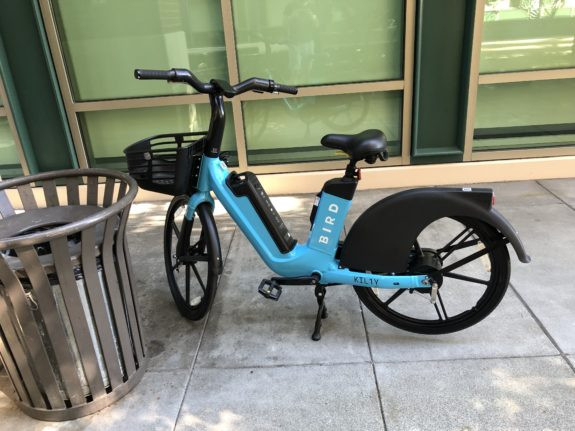Seattle’s streets are buzzing with a fresh wave of electric mobility as Bird, the well-known scooter-sharing company, has quietly launched its new shared Bird Bikes. This move injects a jolt of competition into the city’s e-bike sharing landscape, directly challenging Lime’s long-held dominance since they absorbed JUMP in 2020. Naturally, as a keen observer of urban biking trends, I had to track down one of these bird bikes and put it to the test.
First Look: Bird Bikes vs. the Seattle E-bike Scene
While Veo also operates “bikes” in Seattle, these are essentially throttle-controlled scooters with largely ornamental pedals. Bird bikes, in contrast, are genuine pedal-assist e-bikes, much akin to the familiar Lime bikes that have become a staple for Seattle commuters and recreational riders alike. Having been initially introduced by Bird in 2021, these e-bikes are now making their Seattle debut. The pricing structure is set at $1 for unlocking a bird bike plus 39 cents per minute of ride time. This is a notable detail for budget-conscious riders, undercutting Lime’s per-minute rate by 8 cents at the time of writing. It’s worth keeping in mind that these prices are subject to change as companies jockey for market position.
 A Bird branded e-bike parked on a Seattle street.
A Bird branded e-bike parked on a Seattle street.
Putting Bird Bikes to the Hill Test: Performance and Ride Quality
After a bit of searching, I managed to get my hands on a fully operational bird bike and embark on a ride. My immediate priority was to assess its hill-climbing capability, a crucial factor for navigating Seattle’s notoriously steep terrain. I subjected the bird bike to the daunting inclines of Spring and Seneca Streets, tackling the blocks between 2nd and 4th Avenues. The bird bike passed with flying colors, conquering these extremely steep stretches with ease. This performance benchmark suggests that bird bikes are well-equipped to handle any bike route Seattle throws their way.
Delving into the bike’s features, the blue and black bird bikes are equipped with solid tires, a design choice reminiscent of the early iterations of private bike share programs in Seattle around 2017. Solid tires offer undeniable reliability by eliminating flat tires, a common nuisance for cyclists. However, this robustness comes at the expense of ride smoothness. The ride on bird bikes is noticeably bumpier compared to Lime bikes, which utilize air-filled tires for enhanced cushioning. Another aspect I observed was the slightly less responsive brakes on the bird bike. While they were certainly adequate for stopping even on steep descents, they lacked the immediate bite of Lime bike brakes. On a positive note, adjusting the saddle height on the bird bike was a breeze thanks to the intuitive dropper post handle, allowing for quick and easy customization for different rider heights.
Bird Bikes vs. Lime Bikes: Price and Overall Value Proposition
In a direct comparison, the Lime bike arguably holds a slight edge in overall ride quality, benefiting from JUMP’s extensive bike development experience. However, the bird bike counters with a more budget-friendly price point. The 8-cent per minute difference might seem negligible at first glance, but it accumulates over longer rides. For a 30-minute journey, this price gap translates to a $2.40 saving, roughly the cost of a single transit fare. The emergence of bird bikes as a direct competitor raises an interesting question: will Lime be compelled to reconsider its recent trend of price increases in the face of this new competition?
Initial Encounters and Reliability Considerations
My initial attempts to locate a rideable bird bike weren’t without hiccups. On my first outing, bird bikes were sparsely distributed across the city. The first bird bike I located wasn’t even registered on the app, and the reason became immediately apparent: its battery was missing – not an encouraging start. A subsequent search led me to another bird bike nearby, this one thankfully equipped with a battery. However, the ride experience was perplexing. It was unclear if the issue was specific to that particular bike or a system-wide limitation, perhaps mirroring the 8 mph speed restriction imposed on first-time scooter riders. Regardless, the bike seemed to actively resist any attempt to pedal beyond approximately 8 mph. Pedaling felt like engaging the brakes, while ceasing pedaling allowed the motor to disengage and the bike to roll freely. Restarting the trip did not resolve the issue.
To determine if this was an isolated problem, I embarked on a more extensive bird bike hunt. The GPS locations in the app proved to be somewhat inaccurate in the downtown core, often indicating bikes a block away from their actual location. Persistence eventually paid off, and I located a second bird bike. This one performed flawlessly. The motor provided the expected pedal assistance up to 15 mph, and there was no resistance to pedaling beyond that speed, unlike the first bird bike I encountered.
The true test for bird bikes will be their long-term reliability. My initial experience of struggling to find a functional bike when only a limited number were deployed raises some concerns. However, this could simply be teething problems associated with the launch of a new service. Ultimately, the arrival of more bird bikes on Seattle’s streets is a positive development, reigniting bike share competition after a period of relative stagnation. This renewed competition promises more choices and potentially better value for riders in the long run.

